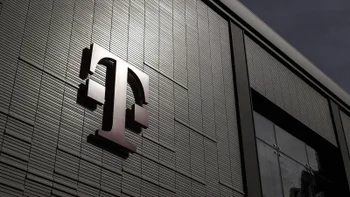Satellite images reveal Huawei's intent to design and build advanced chips for phones and AI

For the most part, every time the US has tried to block Huawei from creating a competitive smartphone, the Chinese manufacturer has, like the dinosaurs in Jurassic Park, found a way. First, the US put the company on the Commerce Department's Entity List which had the effect of preventing Huawei from working with Google. No longer could Huawei install the Google Mobile Services version of Android. This forced Huawei to develop its HarmonyOS operating system.
One area where Huawei has made strides but is still behind is in the designing and manufacturing of chips used to power its phones. In 2020, the US expanded its Foreign Direct Product Rule (FDPR) and with revisions made, this rule prevents Huawei from obtaining any cutting-edge chip made using US technology. These chips are defined as those that support 5G connectivity made using a process node less than 10nm. Still, Huawei is able to obtain 5G-enabled chips from China's largest foundry (and the third largest in the world) SMIC made using the latter's second-generation 7nm node.
SMIC and other companies in China are banned from purchasing the lithography equipment that would allow it and other Chinese foundries to manufacture chips using a 5nm or lower process node. This year, both TSMC and Samsung Foundry plan to ship semiconductors manufactured using a 2nm process node. But that doesn't mean that Huawei isn't planning to get its hands on advanced chips somehow. There has been speculation that Huawei is developing a substitute for extreme ultraviolet lithography (EUV) machines that would allow it to build cutting-edge chips.
Satellite images reveal that Huawei is building a production line to produce advanced chips in the district of Shenzhen. The goal is to help make China self-sufficient in semiconductors. The images show the construction of three similar-looking manufacturing facilities that reportedly started in 2022. Huawei has been very quiet about these buildings. Not only could they house production lines for smartphone application processors built using advanced nodes, they also might house production lines that will help the company continue to put competitive pressure on US chipmaker Nvidia. Both companies are involved in designing AI accelerators.
Huawei is looking to develop every tool needed to create a supply chain in China for AI chips. Dylan Patel, founder of chip research and analysis firm SemiAnalysis, said, "Huawei has embarked on an unprecedented effort to develop every part of the AI supply chain domestically from wafer fabrication equipment to model building. We have never seen one company attempt to do everything before."
Nvidia CEO Jensen Huang said during a meeting Thursday between Nvidia executives and the U.S. House of Representatives Foreign Affairs Committee that China is very, very close in the chip race. The Trump administration had asked Nvidia to stop selling its latest AI chip, the H20, in China. This request ironically has backfired as this has enabled Huawei to sell large numbers of its latest Ascend chip in the country to fill the gap left by the departure of Nvidia from the Chinese market.
Follow us on Google News










![A new Android bug is making it impossible to install new apps. Are you affected? [UPDATE]](https://m-cdn.phonearena.com/images/article/176703-wide-two_350/A-new-Android-bug-is-making-it-impossible-to-install-new-apps.-Are-you-affected-UPDATE.webp)

Things that are NOT allowed:
To help keep our community safe and free from spam, we apply temporary limits to newly created accounts: